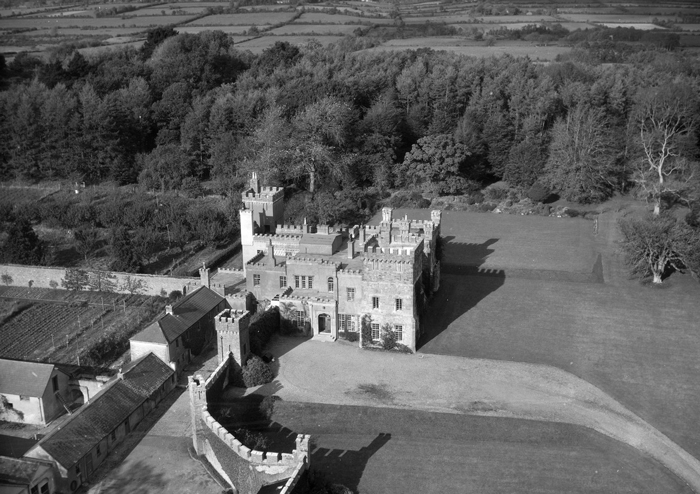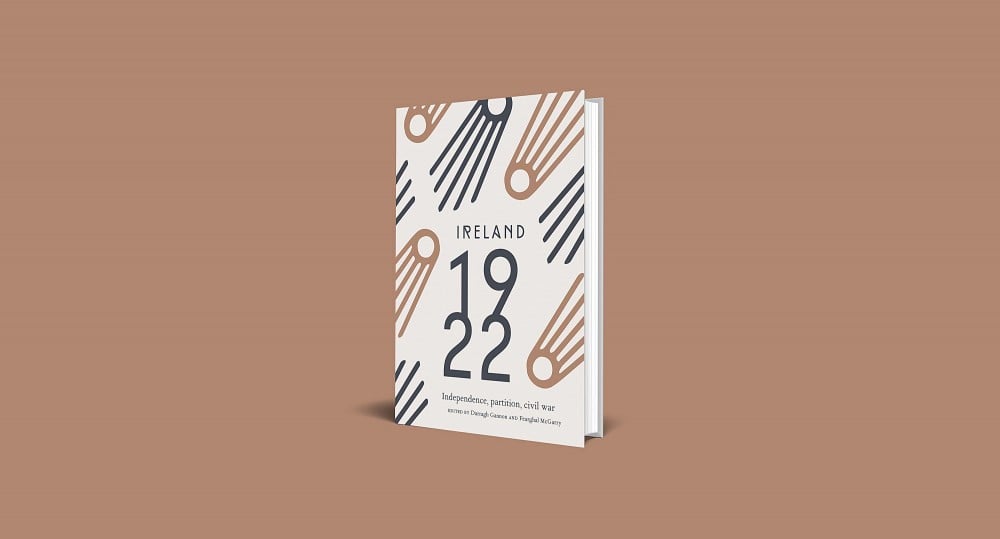23 October 1922: The Burning of Tullamaine Castle
Everyday Violence in the Irish Civil War
by Gemma Clark
‘Another Tipperary castle destroyed’, reported the Nenagh Guardian on 23 October 1922, detailing the burning, during the previous week, of Tullamaine Castle, near Fethard, County Tipperary. In what was becoming a familiar military strategy—razing former or potential barracks as National Army troops advanced—the castle had been occupied by a ‘large force of Irregulars’ (anti-Treaty republicans engaged in guerrilla warfare with the nascent Irish Free State). The subsequent damage, estimated at £60,000, to one of the county’s ‘finest private mansions’ (Nenagh Guardian) did not, however, garner much further attention from the local press.¹ The historic and political significance of the anti-Treaty IRA’s campaign against these former seats of British loyalist and Protestant power was not lost on contemporaries, and has been much interpreted since, in culture and academia. Yet, from the burning of small hayricks to fiery spectacles on huge demesnes, arson—alongside other acts of ‘everyday’ violence and intimidation (assault, boycotting, animal maiming, circulation of threatening notices)—had become commonplace in Ireland during 1922, serving two key functions in the war over the independence settlement with Britain: community regulation and land redistribution.
With its ‘long hall’ and ‘battlemented screen wall with turrets’,² Tullamaine Castle, constructed in its current style in 1835–8, on the site of a Norman structure, had in common with other ‘big houses’ in rural Ireland its size and striking appearance. Typically these residences—built in the Georgian era and evoking Palladian elegance—had asserted an ‘imperial domestication of a wild Irish countryside’.³ Their destruction, by fire, thus represented the undoing of the English Plantation: smouldering mansions and blackened shells of former settler-privilege are strong motifs of Irish and postcolonial fiction.⁴ (Unlike other ‘big houses’ in the county, Rapla House and Graguenoe Park, which were abandoned following their burning,⁵ Tullamaine was repaired and resold many times in the decades that followed. A 1982 Irish Times advertisement offered the estate at the ‘bargain price’ of £300,000, noting that substantial spending on modernisation had rendered Tullamaine ‘one of the most liveable castle[s] in Ireland’.)
The intensification of ‘big-house’ burning during the civil war, as compared to the earlier War of Independence, poses interesting questions about the motivations of the warring sides. In Tipperary, a hotbed of ‘everyday’ violence, four ‘big houses’ were burned during January 1920–July 1921, compared to twenty-nine during January 1922–April 1923.⁶ In common with many mansion dwellers—and the already dwindling landlord class—who had fled Ireland earlier in the revolution, Major Edward Clement Morel, Master of the Foxhounds, had departed Tullamaine in summer 1921. Perhaps the October 1922 burning of the lavish hunting lodge can be seen, then, as a final routing of English culture; foxhunting had been identified since the late nineteenth-century land wars as the ‘embodiment of landlordism’— and hunts historically were disrupted by protesters (although, Tipperary’s apparently ran ‘most successfully’ on Morel’s estate ‘for two years’).⁷ Morel’s British military credentials, and an earlier War of Independence encounter at Tullamaine, also may have marked out Edward for a future act of revenge; scholars of civil war around the globe observe that the opportunity to act on old vendettas is often realised by, and against, civilians during intra-state conflict. In January 1921 a flying column of the Third Tipperary Brigade made a hasty escape from the castle when the armed men realised that Mrs Morel, while apparently preparing the meal demanded by them of ‘the lady of the house’, had ‘sent a messenger to Fethard for the [British] military’.⁸
It is likely that various personal and political grudges, as well as local military considerations, intersected in the burning of Tullamaine; we see the complexities of civil-war violence not only in large-scale attacks on seemingly obvious symbols of former British rule, but also in the burning of more modest properties. On 15 October 1922, a week before the fire at Tullamaine, and around eight miles north of the castle, Hugh O’Brien’s hay barn, in Ballincurry, Thurles, was destroyed by fire. O’Brien’s loss, the basis of a compensation claim to a British government committee, fit a wider pattern; accounting for 28% of arson attacks in Tipperary, crops and outhouses were the most common category of property burned in the county during the civil war. Yet, perhaps to bolster his chances of financial remuneration, O’Brien explains the episode not in terms of the land hunger driving violence across the county but rather his political allegiances, stating himself to have been ‘very friendly with the RIC [the Royal Irish Constabulary] and the army’. Information O’Brien supplied to the authorities had allegedly ‘saved a party of soldiers’ from an IRA ambush and ‘before the hay was burned we got a letter threatening to drive us out after the British’.⁹
Violence profoundly shaped individual lives, causing physical injury, financial hardship and forced relocation. By analysing collectively the thousands of acts of intimidation, arson and other forms of harm that took place in Ireland in 1922–23, we understand also the ideological and strategic functions of violence against civilians during the civil war. Republicans protested the Treaty’s maintenance of a link with Britain by punishing the Protestant minority and driving out former ‘loyalists’ of all denominations. While the building most commonly burned during the civil war was the small- to medium-sized house (accounting for 16% of all arson attacks in Tipperary), ‘big houses’ like Tullamaine Castle were disproportionately targeted during the conflict (accounting for 15% of all burnings). Looking at Tipperary in a wider context (with Munster neighbours Limerick and Waterford), 25% of buildings burned were ‘big houses’ and 19% of arson attacks were attributable to the claimant’s ‘allegiance to the United Kingdom’.¹⁰ Yet, as the burning of O’Brien’s barn also shows, politicised violence over land had clearly not ended with the land war and subsequent empowerment of tenants via British and Irish Free State land-purchase legislation. Revolutionary social agendas that did not necessarily align with anti-Treaty or anti-British feelings also persisted in independent Ireland, as republican and rural agitators intimidated farmers and graziers to enact land redistribution. These myriad local conflicts over political loyalties, religious and cultural identities, land and economic resources typified the disorder of 1922 in many areas—with violence continuing up to and beyond the end of the civil war in May 1923.
Extracted from Ireland 1922 edited by Darragh Gannon and Fearghal McGarry and published by the Royal Irish Academy with support from the Department of Tourism, Culture, Arts, Gaeltacht, Sport and Media under the Decade of Centenaries 2012-2023 programme. Click here to view more articles in this series, or click the image below to visit the RIA website for more information.






















